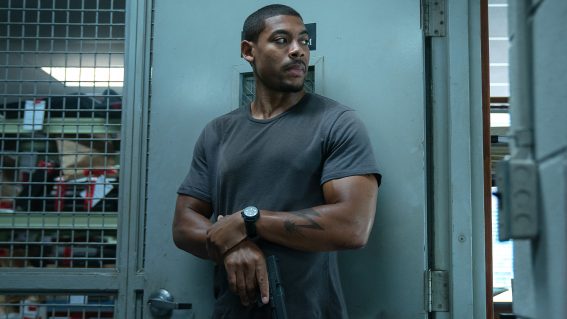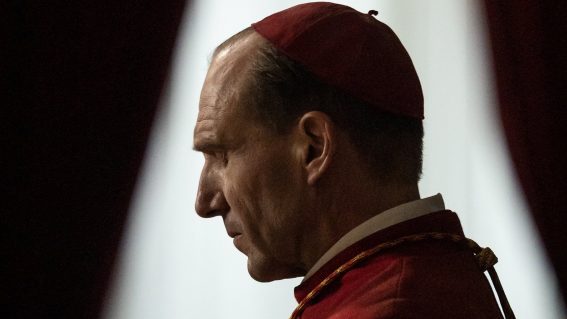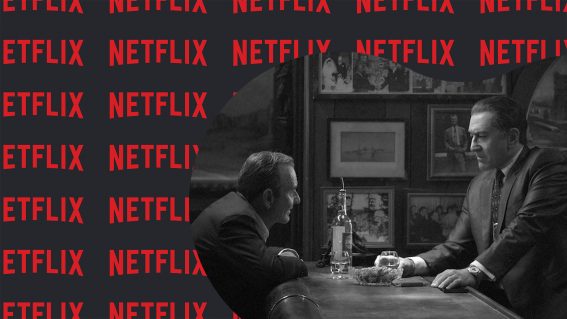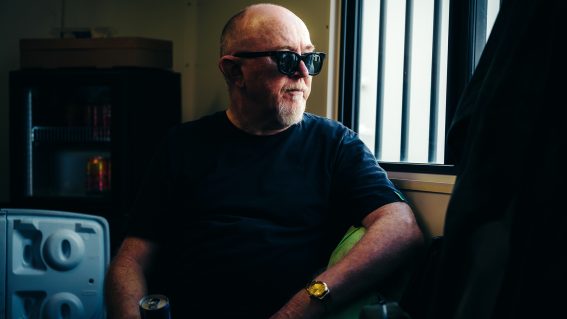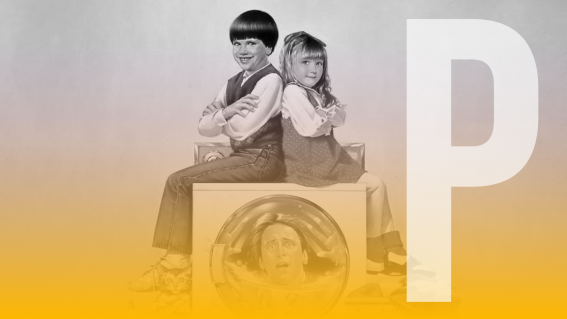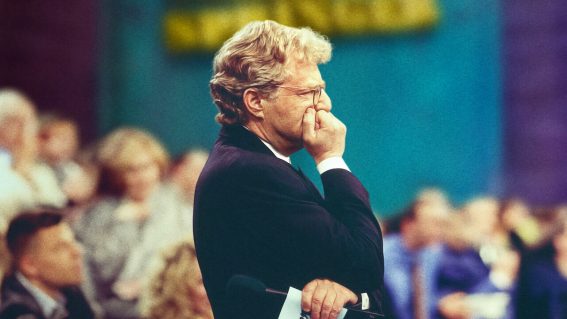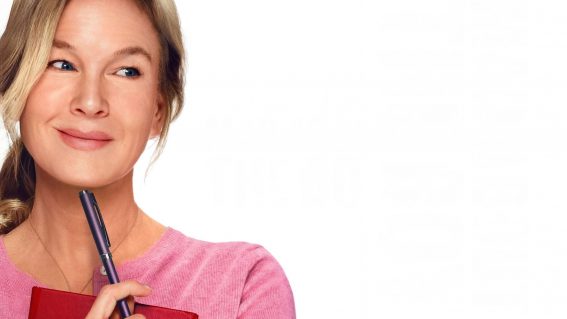Cobra Kai’s final season kicks off (and then kicks and punches and kicks some more)
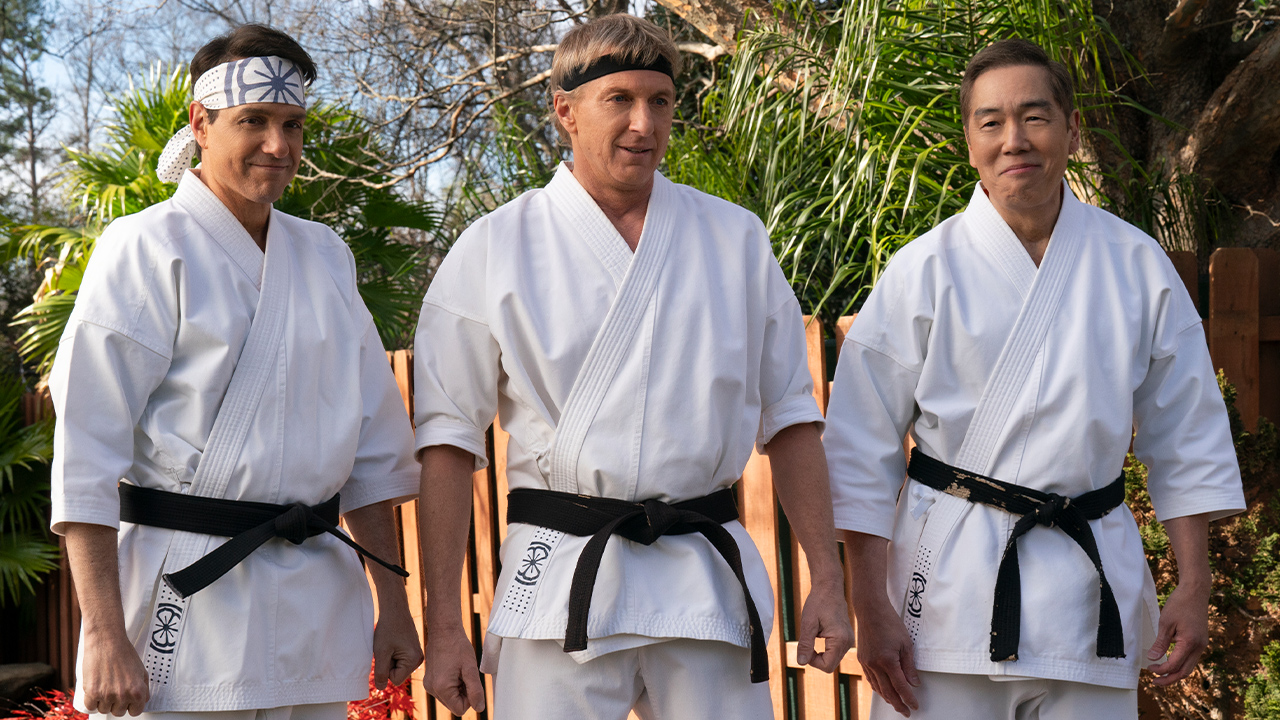
An unlikely Karate Kid spinoff enters its home stretch with the final season of Cobra Kai. David Michael Brown looks at how the show has entertained new audiences while servicing fans of the original films.
This is the beginning of the end. What started life as a fun Karate Kid spin-off on YouTube in May 2018 has now reached its sixth and final season as a streaming behemoth. A lot has happened since Johnny Lawrence (William Zabka) and Daniel LaRusso (Ralph Macchio) first drew blood in Rocky director John G. Avildsen’s The Karate Kid in 1984. When “wax on, wax off” became part of the modern pop culture vernacular and the crane kick was the de rigueur move for kung fu fighting juveniles in the playground.
Now, in the hugely enjoyable television show Cobra Kai, the tables have been turned. At the beginning of the series, former rich kid Lawrence was down on his luck and trying to find some kind of meaning in his washed-up alcoholic car crash of a life by resurrecting his old dojo Cobra Kai. Flashy car salesman LaRusso, who used to live on the wrong side of town, now boasts a lavish mansion as his chosen domicile and enjoys the trappings of success while trying to control his wayward daughter Samantha (Mary Mouser) who was mixing with some spoiled rich kids.
Their worlds collide, 30 years after their confrontation at the All Valley Under 18 Karate Tournament in San Fernando Valley, when Samantha accidentally smashes into Johnny’s car. Things get even more complicated when Lawrence’s neighbour Miguel Diaz (Xolo Maridueña), a young teen who becomes a member of the new and improved Cobra Kai, starts an ill-advised romantic tryst with LaRusso’s daughter. Fast forward to the end of season five and we have witnessed brutal back-breaking mass school corridor brawls, trips to Japan, vandalised dojos, fractious relationships, teen tantrums, unlikely allegiances, drunken road trips, preposterous mohawks and plenty of waxing. And the unlikely sight of Lawrence and LaRusso defiantly standing together to take on a mutual foe.
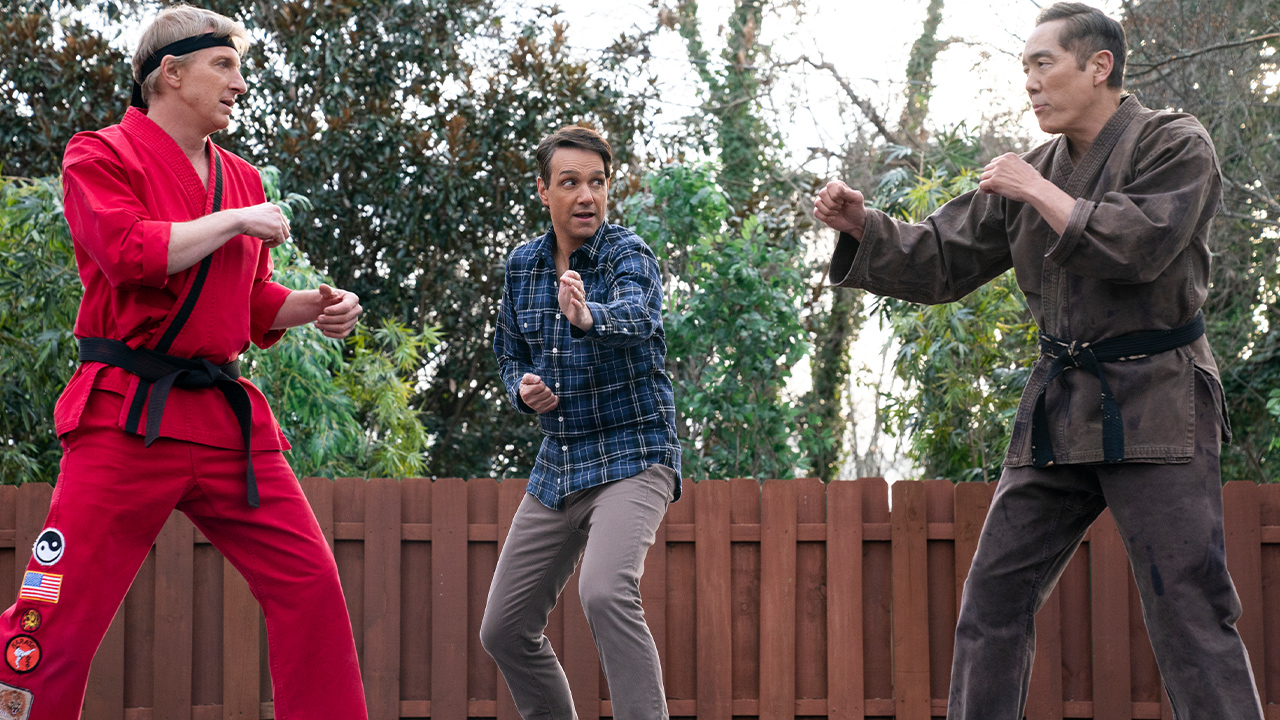
“First of all, that this ever happened feels amazing,” Zabka told Screen Rant when discussing the upcoming season. “Yeah, we carried the torch of being the villains for 30-some years, so the fact that we had the opportunity to play these characters again and give them some humanity and depth and colour and see through their eyes, all that, has just been a thrill. But we’re excited about season 6, and we feel like the resolve and where this all lands is going to be crowd-pleasing, and certainly was pleasing, as an actor, to play. It’s a great close to this chapter of this story, and yeah, it feels good to have some people on your side.”
What will happen in this new season is under wraps. Still, a typically vague Netflix release states, “Picking up with Cobra Kai eliminated from the Valley, our sensei and students must decide if and how they will compete in the Sekai Taikai—the world championships of karate.” And what will unfold will be spread over 15 episodes across three parts, the third part of which will be not streamed until 2025.
At the end of season 5, pantomime bad guy John Kreese (Martin Kove) has faked his own death and slick poseur Terry Silver (Thomas Ian Griffith) is revealed to be a dastardly cad when he’s filmed bribing judges to win the All-Valley competition. A brutal show-down ensues between Silver and LaRusso which sees the former karate kid bloodied and bruised but triumphant as Silver is arrested for his sins. Meanwhile, audiences were shocked at the malicious machinations at hand as the incarcerated Kreese, who was not dead after all, has escaped from prison, vowing to take back Cobra Kai and destroy Lawrence and LaRusso’s Eagle Fang and Miyagi-Do dojos. It’s on like Donkey Kong.
Cobra Kai’s greatest asset has always been its cast. Mixing legacy characters with a whole slew of fresh-faced ass-kicking youngsters, the show has managed to entertain new audiences while servicing the fans of the original films. In a clever move, these joyous moments have been drip-fed throughout the seasons. At the centre of proceedings, Zabka and Macchio, in particular, are wonderful in their roles. A long way from the teenagers we first met them as. Lawrence, in particular, is an absolute delight as the metalhead boozer desperately hanging on to his youth by clinging to the things that made him feel alive. Whether that’s cranking up Rocky IV theme song Burning Heart by Survivor, rewatching Iron Eagle, chugging brews, or his Dojo Cobra Kai. LaRusso, the more successful of the two has become a prominent figure but has chosen wealth over the teachings of his sensei Mr. Miyagi (Happy Days alum Pat Morita).
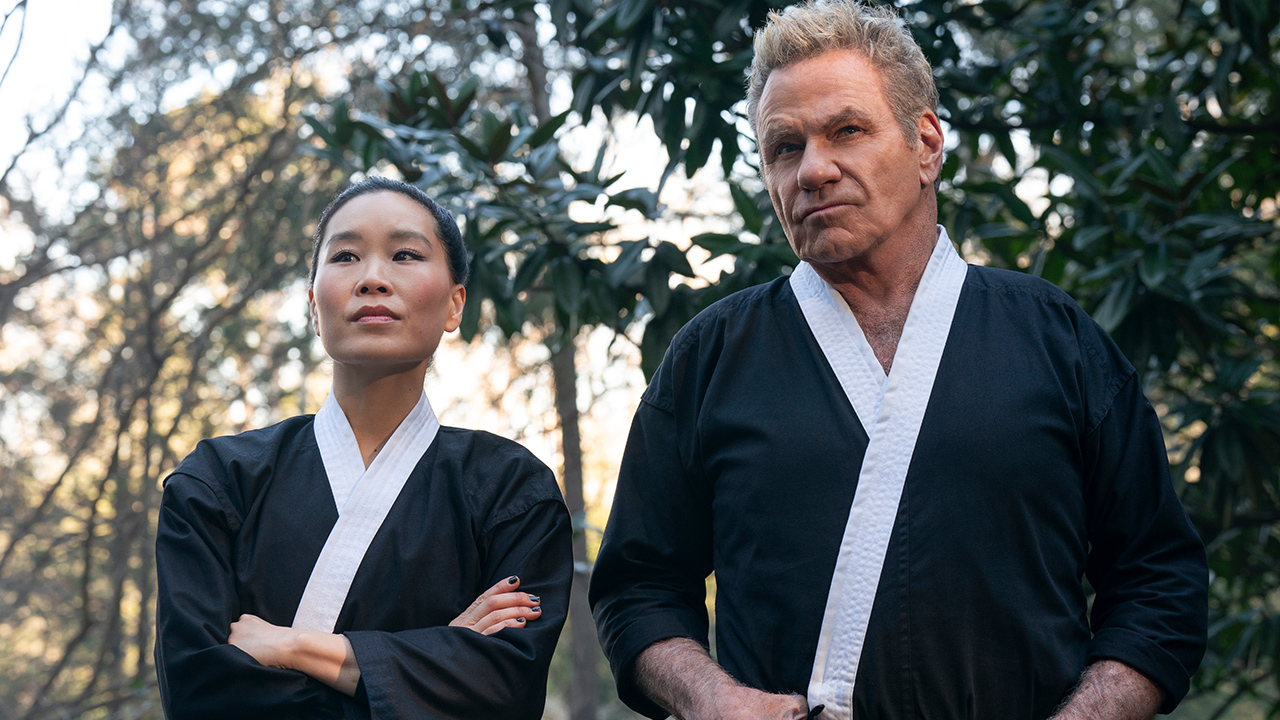
Familiar faces from the first three Karate Kid films have with much fanfare. As well as John Kreese and Terry Silver, cranking up the cartoonish wickedness. Mike Barnes (Sean Kanan) returns to join the rogue’s gallery of villainy while Chozen Toguchi (Yuji Okumoto) from The Karate Kid II, who when we last saw him wanted to kill LaRusso, now wants to make amends for his psychotic behaviour in the first sequel.
Also from that sequel, Tamlyn Tomita played Daniel San’s love interest Kumiko. In Cobra Kai she is Daniel’s guardian angel when he returns to Japan. In that film, a typhoon threatened to flood the village. Rushing for cover from the perilous rainstorm, Daniel hears the terrified screams of a young girl. He scales a precarious wooden bell tower and rescues a young girl who is trapped. Years later, it is that very girl, Yuna, now played by Traci Toguchi, who does the saving when she helps Daniel save his car dealership from bankruptcy while he is in Japan. It’s these character touches that have ensured the show’s longevity. By giving older characters’ appearances some meaning rather than just showboating.
The reappearance that created the biggest buzz was Elisabeth Shue returning as Ali Mills, “It was literally like a high school reunion,” she told Entertainment Weekly. “It felt like no time had passed. Like none at all. We kept reminiscing and laughing, constantly reliving the first Karate Kid every minute between takes.”
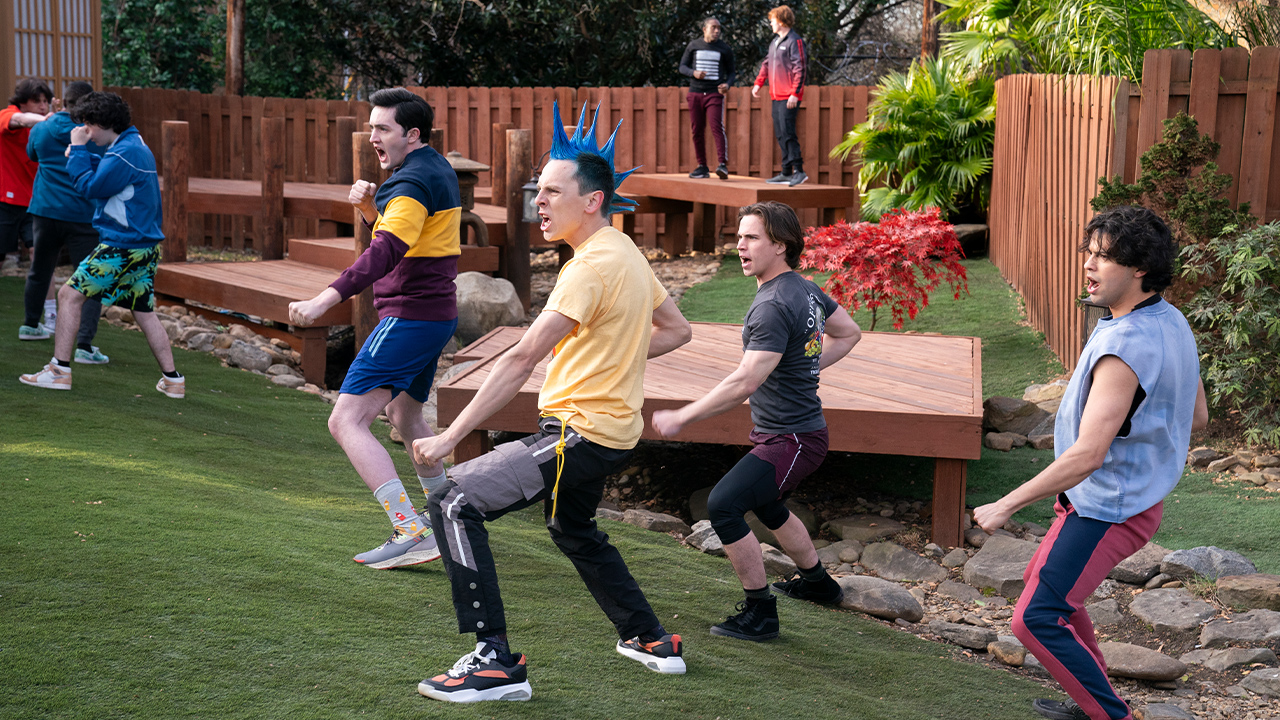
It’s not just the tried and tested talent that. The young cast also impresses. Xolo Maridueña is a star in the making having already taken the lead in DC’s Blue Beetle while Paul Walter Hauser, who plays the hapless Stingray, found fame in I, Tonya, worked with Clint Eastwood, voiced Embarrassment in this year’s animated blockbuster Inside Out 2 and was to star in Quentin Tarantino’s ill-fated The Movie Critic. Tanner Buchanan (Robby Keene), Jacob Bertrand (Eli “Hawk” Moskowitz) and Peyton List (Tory Nichols) all attack their roles with vigorous aplomb. All display able karate skills to go with their acting chops.
The show’s makers have also constantly been aware of The Karate Kid’s position in ’80s pop culture, often playing with its status. From the use of the Peter Cetera track Glory of Love which was also Daniel LaRusso and Kumiko’s love theme in The Karate Kid II to a season 5 ’80s dress-up night at the skate mall where Samantha and Robby dress up as Andie Walsh and Steff from Pretty in Pink, “Come on, with the hair you know my only option was Spader!” Miguel even styles himself as ’80s-era Johnny wearing the same red Cobra Kai jacket that Johnny wore in the original, bringing the show full circle back to The Karate Kid.
In the third season of the show, a blustering John Kreese announced, “Cobra Kai is not a hobby, it’s not a club. Cobra Kai is your brothers and your sisters. You’re all Cobra Kai for life because Cobra Kai never dies.” Here’s hoping that despite proclamations that this will be the final extended season of the show, that it will return. As Johnny Lawrence says, “Cobra Kai will always be bad ass!”



